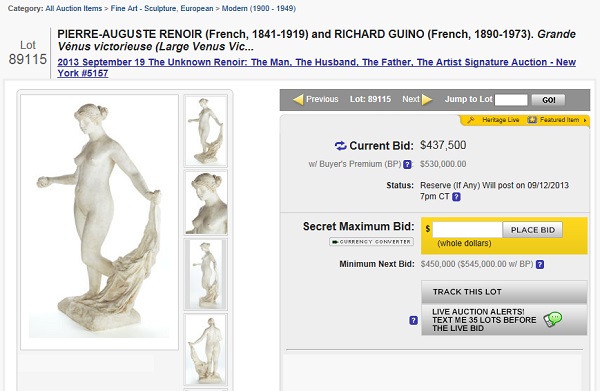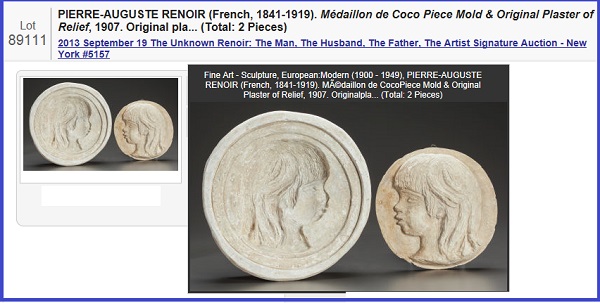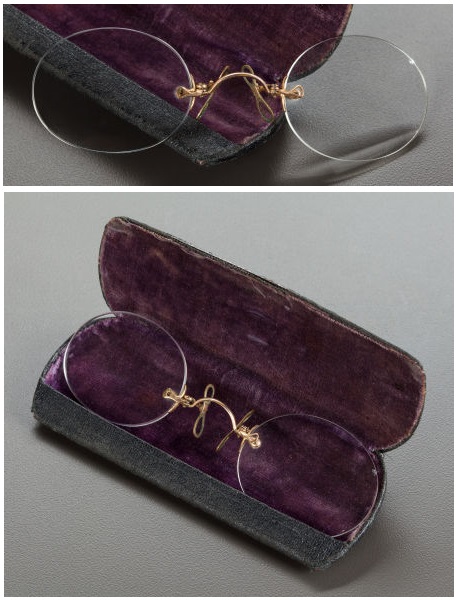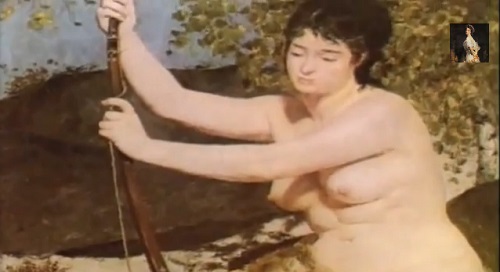
Grande Vénus victorieuse (Large Venus Victorious), 1914-15
Original plaster
71 inches (180.3 cm) high
Published by Vollard, Paris
THE RENOIR COLLECTION
With her weight rested on her right hip, holding a drape in her left hand and the golden apple in her right, this standing female nude is said to be the culmination of Renoir’s sculptural works. Transforming paradox into perfection, Renoir marries contradictory attributes to personify his idea of female quintessence. Vénus victorieuse the Woman is majestic yet simple, engaged and yet isolated, familiar but also obscure. With this sculpture, Renoir redefines classical theme and form to portray the eternal beauty of Woman – a leitmotiv apparent in much of his work.
LITERATURE:
P. Haesaerts, Renoir Sculptor, New York, 1947, p. 24, no. 6, illustrations of another cast pls. XIV-XXI.
NOTE:
This original foundry plaster is not copyright protected.
images :ha.com
The single largest archive of Pierre-Auguste Renoir’s personally-owned objects — from his signature polka-dot scarf to the original plaster maquette of La Grande Venus Victrix — will highlight an expansive grouping dedicated to the Impressionist icon in Heritage Auctions’ The Renoir Estate Collection Signature® Auction, Sept. 19 in New York.
The collection is an intimate glimpse inside the personal and professional life of the master painter through a trove of important documents, including his marriage certificate, photographs and letters written to Renoir from friends and contemporaries such as Monet, Manet, and Rodin. The collection also features a selection of original sculptural plaster maquettes created at Renoir’s estate in Cagnes, France, in the twilight of his career. Battling severe arthritis, Renoir collaborated with a young and able-handed artist, Richard Guino, at his dealer Ambroise Vollard’s suggestion.
Together, Renoir and Guino selected which drawings and paintings would work as sculptures, and they set to work. Included among the sculptural offerings is likely the auction’s top lot — a 72 inch tall original plaster maquette for La Grande Venus Victrix, the Roman goddess.
This museum-level collection is superb in its completeness and reveals volumes about the man and his art,” said Brian Roughton, Managing Director of Fine Art at Heritage Auctions. “It touches every corner of his life and represents the last time this collection will appear assembled ever again. In addition to the personal letters and objects, we’re also thrilled to have the opportunity to offer 20 carefully collected original plaster maquettes.”

Médaillon de Coco Piece Mold & Original Plaster of Relief, 1907
Original plaster
8-1/2 inches (21.6 cm) (relief diameter)
11-1/2 inches (29.2 cm) (diameter with borders)
Published by Hodebert, Paris & Flechtheim, Berlin
THE RENOIR COLLECTION
Renoir’s first sculptural work, this medallion and the bust of his youngest son, Claude “Coco” Renoir are the only two sculptures Renoir executed entirely with his own hands. The work was intended to decorate the fireplace in the dining room of Les Collettes at Cagnes, where it was displayed once finished.
Estimate: $20,000 – $30,000. LITERATURE:
P. Haesaerts, Renoir Sculptor, New York, 1947, p. 19, no. 1, illustration of another cast pl. III.
Among the maquettes, Heritage is offering “Coco,” one of the only plaster maquettes that Renoir produced himself, depicting his young son Claude.
The staggering amount of life documents, awards and ephemera includes rarities such as an American Medal of Honor awarded to Renoir at the 1883 Foreign Exhibition and an album of candid family photographs featuring Henri Matisse among other notable artists of the day. The archive also includes rarely seen objects likely made for the artist’s eyes only, such as a diminutive polychrome ceramic vase and sugar bowl thrown and painted with his son, Jean, at Les Collettes as Jean recuperated from War injuries at Les Collettes.

Artist Unknown:.
Condition Report*:
4.25 x 1.5 inches
